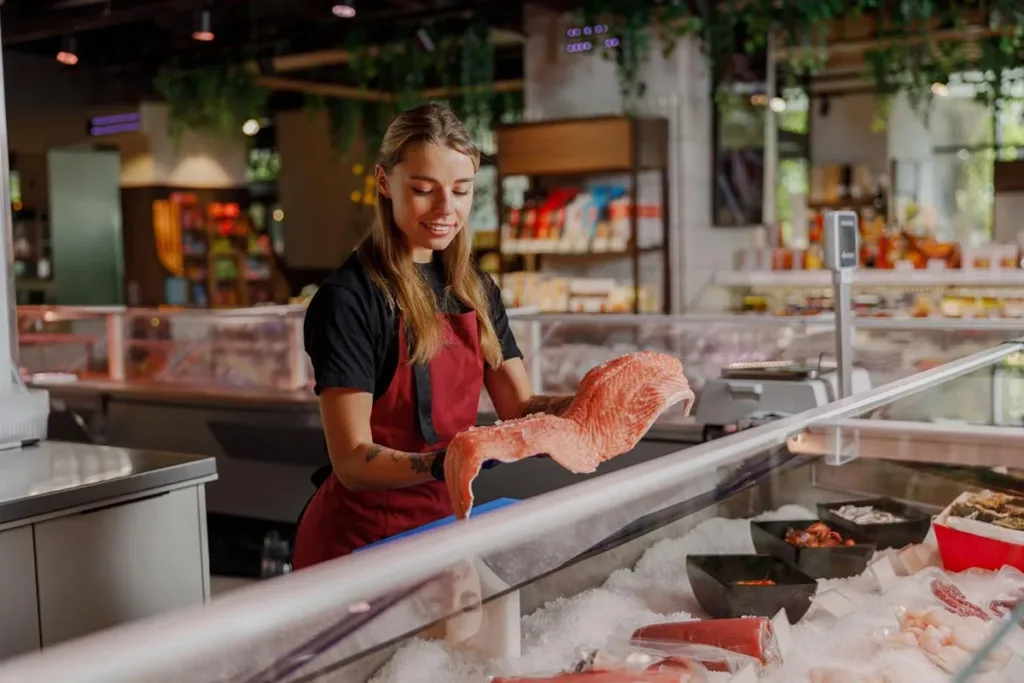5 steps to increase restaurant profits during the summer rush
Skip the article and turn takeaways into action by scheduling a call with our team.
The summer is often the busiest season for the restaurant industry, so it’s the perfect time for restaurants to make the year profitable. However, the rush can often mean cut corners, slammed services, waste in the kitchen, and more—all of which lead to lower profit margins. The question of how to increase restaurant profits during the summer rush is one restaurateurs ask every year.
Here we’ve got five solutions for you. Incorporating these practices is a great start to the summer, and these habits can lead to long-term success and permanently higher profits.
1. Optimize labor and staffing

Labor costs are a major expense in the restaurant business, hovering around 25-35% of total sales in a healthy business. Since labor costs are often the highest during the busy summer season, restaurants can turn to strategic labor management—i.e., smart scheduling.
If you have too many staff, your profit margin takes a dive. Too few and your customer base gets dissatisfied while your overall restaurant sales drop due to slow service. Navigating optimal staffing is a delicate balancing act, and keeping labor costs under 30% can lead to significantly improved profits.
Smart scheduling helps increase profits during the summer rush without compromising the customer experience. Try these tactics:
- Accurate demand forecasting: Use historical sales data from your POS system or front-of-house (FOH) management system to predict busy periods. Cross-reference historical data with upcoming holidays, events, or tourism trends to schedule staff efficiently.
- Cross-training staff: Train servers, hosts, bartenders, and bussers to handle multiple roles, like serving and bussing tables during rushes. This reduces overstaffing and keeps labor costs lean while keeping the dining experience ship-shape.
- Flexible scheduling: Use part-time or on-call staff to cover unpredictable surges. Restaurant staffing software apps allow real-time adjustments based on demand.
- Performance metrics: Track server performance (e.g., table turnover rates, sales per server) to find top performers and reward them with prime shifts, which help further drive upselling efforts.
- Reviews and feedback: Track Yelp reviews and customer feedback about any staffing issues like slow service or seating. If there are patterns in the complaints about service quality or speed, make adjustments as necessary.
2. Practice smart menu engineering

Menu engineering can have an impactful return on investment. The time spent analyzing menu items based on their cost and popularity and redesigning a menu helps a restaurant owner truly understand their goods and their customers. Menu engineering helps boost sales by highlighting high-profit items, tightening up the back-of-house (BOH), and encouraging guest spending without raising prices.
We’ve done a full breakdown on menu engineering, but for some starters:
- Run a cost and popularity analysis: Identify the exact food cost of a dish down to ingredients like sesame seeds. Track data via platforms like Yelp Guest Manager to see what dishes sell the most and the least.
- Divide menu items into 4 categories: High-profit, high-popularity (stars); High-profit, low-popularity (puzzles); Low-profit, high-popularity (workhorses); Low-profit, low-popularity (dogs)
- Optimize your menu layout: Put high-margin items in prime menu real estate (top center, top right corner) and use visual cues like boxes or bold text to draw attention to them.
- Limit your menu: Cut dogs and other poor sellers, limiting your menu to under 10 items per section. This keeps your BOH from being overwhelmed with inventory and prevents food waste, the bane of bottom lines.
- Go seasonal: Introduce summer flavors to keep your produce seasonal and fresh—which also keeps food costs down. Side dishes especially can be easily swapped out for in-season produce.
- Offer combos: Create combo deals, like a classic prix fixe meal with an appetizer, entrée, dessert, and drink, which can increase average check prices while providing value to customers. Include high-profit items like potatoes to keep customers full and profits high.
- Offer special delivery and takeout deals: Tap into a broad customer base by offering online ordering specials for takeout and via delivery apps. Combos including meal + wine delivery are increasingly popular and let you tap into food delivery services for extra labor.
- Track trends: Follow trends from customer comments on Yelp, competitor pages, and popular food trends across social media to draw in new customers.
3. Promote upsell-driven specials

Upselling encourages customers to spend more without feeling overcharged. The best way to do this is to incorporate it on many fronts, including combining suggestive selling from servers and marketing strategies like limited-time offers for the summer months.
Here are some ways to promote upselling:
- Train staff to upsell: Train servers to recommend high-margin add-ons like cocktails, wine, side dishes, or desserts that match guest orders. Pre-service role-plays between managers and staff can help drill this skill.
- Examine guest profiles: Yelp Guest Manager users can identify trends from repeat guests based on their guest profile. Suggesting either their repeat favorites or new items that match their preferences can go a long way toward building repeat business.
- Create urgency: Offer exclusive specials for the summer months only available then. Use your online presence to promote these via social media.
- Highlight beverages: Push high-margin drinks like craft cocktails, mocktails, or flavored iced teas, which have very high profit margins. Alternatively, partner with local breweries to get a great deal on a seasonal summer beer. Train staff to suggest these beverages with each meal or during happy hour.
- Incentivize upselling: Offer incentives in the form of contests for staff, rewarding top sellers with bonuses or gift cards. Track staff performance via your POS and share it among all staff.
- Promote specials via Yelp: Guest Manager customers that buy Yelp Ads experience up to a 17% monthly lift in diner bookings through Yelp.
4. Keep profit margins without raising prices

Business owners may be tempted to raise prices to increase profits during the summer rush, but doing so risks alienating guests. Instead, focus on cost control and revenue-boosting strategies that fit with the summer:
- Negotiate with suppliers: Summertime is a time of abundance, which provides a perfect opportunity for restaurants to find better rates for seasonal produce. Check out multiple suppliers for deals and build relationships with local farmers for both good deals and tasty produce.
- Reduce waste: Waste is a perennial problem for restaurants, but the summer presents a perfect time to tackle it with innovation. Train kitchen staff to minimize food waste through repurposing—i.e., making specials out of an oversupply or turning vegetable scraps into stock.
- Perfect inventory management: Use inventory management tools to fine-tune your ordering and prevent food waste.
- Improve table turnover: Table turnover optimization, i.e., seating guests efficiently and bussing tables promptly, can improve table turnover rates and increase the number of covers per service.
- Track portion sizes: If guests consistently leave with leftovers, you’re probably overserving. Consider reducing portion sizes by about 10% and pay close attention to customer reaction and Yelp reviews.
5. Leverage Yelp Guest Manager for customer satisfaction

Yelp Guest Manager combines reservation management, FOH and table management, guest data, and marketing capabilities. Guest Manager’s table management features alone can help improve profits by making service more efficient: 86% of restaurants say Yelp Guest Manager streamlines their front of house.
The easy reservation and waitlist features usher more guests in the door. Restaurant owners can use a number of features strategically to increase profits during the summer rush:
- Guest analytics: Yelp Guest Manager’s analytics track guest visit history, dining preferences, and peak reservation times. These analytics can be broad or specific, giving you insights into what regulars eat on a Tuesday or what days are the busiest.
- Yelp Kiosk: Yelp Kiosk can take a significant burden off hosts by allowing guests to check themselves in, and it further provides accurate wait times for customers on waitlists. This allows hosts to attend to the actual business of seating guests, reducing friction in the FOH.
- Waitlists mean repeat visits: Diners that use Guest Manager’s online waitlist are 1.6x as likely to dine again at the same restaurant than walk-ins on the waitlist.
- Marketing tools: Restaurants that use Guest Manager paired with Yelp Ads experience 87% more traffic on their Yelp business page.
There’s much more that Guest Manager could do, and we’d love to show you how it can boost your profits this summer and for every following season. Give us a shout for a free demo—summer is here, and customers are waiting.